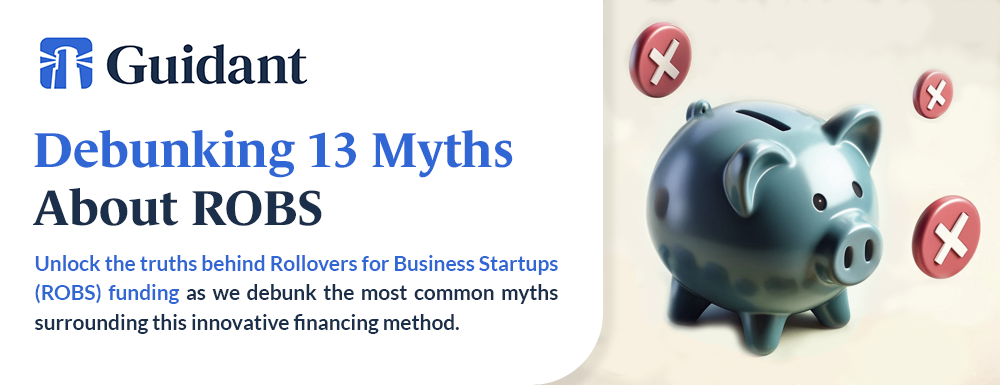

Navigating Due Diligence: Essential Steps for Successful Business Transactions

There is no denying the satisfaction that comes with obtaining a signed letter of intent from both the buyer and seller. However, it’s crucial to recognize that due diligence has yet to be completed. No deal is final until the seller undergoes this process and commits to proceeding.
In Stanley Foster Reed’s insightful book, The Art of M&A, Reed emphasizes that the goal of due diligence is to “assess the benefits and liabilities of a proposed acquisition by investigating all relevant aspects of the business’s past, present, and foreseeable future.” Reed highlights the importance of thoroughly examining every aspect of a business and its potential trajectory.
Due diligence is inherently comprehensive, and it’s no surprise that many deals falter during this critical stage. Therefore, it is prudent for both buyers and sellers to consult with key team members, such as lawyers and accountants, before embarking on due diligence.
Reviewing All Aspects of a Business
There are numerous factors that buyers and sellers should consider before initiating due diligence. A checklist addressing these areas is essential. For instance, accounts receivable should be scrutinized to identify outstanding debts. Similarly, inventory should undergo thorough examination.
Environmental concerns, often underestimated by sellers, can derail a deal swiftly. Issues such as lead or asbestos contamination, or water pollution, require careful assessment due to potentially substantial remediation costs and time commitments.
If the business holds trademarks, patents, or copyrights, these valuable assets must be properly documented and their transferability confirmed. They are critical to the business’s current and future value.
The strength of any business lies in its key employees and management. Sellers should evaluate their team for any weaknesses, while buyers must gain a comprehensive understanding of the workforce. Over-reliance on the owner or key personnel can signal risks.
For example, in manufacturing, it is imperative to evaluate all aspects of the production process. The condition of equipment, its anticipated lifespan, efficiency, and overall value are crucial considerations. Identifying key suppliers and assessing their reliability is equally essential.
Due diligence is pivotal for buyers to comprehend the true nature of the business being sold. Sellers can leverage this process to highlight their business’s strengths and address any weaknesses.
Through due diligence, stakeholders can gain insights into critical factors, such as the company’s competitive edge, long-term potential, status of team members, customer and supplier relationships, and more. Business brokers and M&A advisors are well-versed in every facet of due diligence and can guide stakeholders through this complex process.
Copyright: Business Brokerage Press, Inc.
The post Navigating Due Diligence: Essential Steps for Successful Business Transactions appeared first on Deal Studio.


Debunking 13 of the Biggest Myths About ROBS
Unlock the truth about ROBS. Discover why entrepreneurs are turning to this financing option and dispel common myths


More and more entrepreneurs are using Rollovers for Business Startups — ROBS for short — to fund their dreams. In fact, over half of business owners surveyed in our Small Business Trends studyused ROBS to finance their businesses this year. Yet, it’s surprising how many current and aspiring small business owners believe all the wrong things about ROBS.
In what follows, we’ll dispel many of the biggest myths surrounding ROBS and demystify its complexities — all while clarifying the potential advantages of using ROBS. Let’s get started.
Do you qualify for ROBS? Answer These 5 Questions to see if you qualify now.
Debunking 13 ROBS Myths

Myth 1: ROBS Is a Loan
While loans and ROBS are both financing methods for business needs, ROBS is not a loan. ROBS utilizes your own retirement funds and creates a new retirement plan for your company that all employees can contribute to. If you obtain a loan, you’ll have to pay debt service every month. But because ROBS uses your own funds, you won’t have to pay debt service. It leaves your cash flow clear to be used in the business as you see fit.
Myth 2: ROBS Can’t Be Used with Every Type of Business
ROBS can be used with virtually every type of business and industry. The exception is that the business must be legal on the Federal level. So, for example, you could not fund a marijuana-based business even in states where marijuana is legal because it is not legal on the Federal level.
Myth 3: ROBS Can’t Be Used to Fund a Franchise
This one is totally untrue. ROBS has been used by thousands of franchisees to fund the initial purchase of a franchise, expansion of their franchise holdings and a myriad of business needs on the part of the franchisee. ROBS, unlike other some other forms of financing, can be used flexibly for either a franchise or a stand-alone business.
Myth 4: ROBS Is a Method of Tax Avoidance
ROBS is definitely not tax avoidance. This myth may derive in part from the tax treatment of the retirement funds used. Ordinarily, if you want to withdraw tax-advantaged retirement funds like 401(k)s and traditional Individual Retirement Accounts (IRAs) before the age of 59 1/2, the Internal Revenue Service (IRS) taxes the withdrawn funds and also levies a 10 percent tax penalty for early withdrawal. But ROBS uses a unique structure to withdraw the funds, and the IRS allows qualified funds to be withdrawn without taxation. In addition, the 1974 Congressional enactment of the Employee Retirement Income Securities Act (ERISA), along with key IRS provisions, allows for ROBS to help you grow both your business and your retirement savings at the same time.
Myth 5: ROBS Works for Every Business Entity
To avoid taxation on your retirement funds, ROBS need to be structured according to specific requirements. That means your business must be registered as a C Corporation (C Corp). How does it work? Briefly, a C Corporation is created, along with a new retirement plan for that C Corp. All workers, including you, must have access to that new retirement plan. Your qualified retirement funds are then rolled over into the new retirement plan. You then purchase stock in the new C Corp with the funds in the new retirement plan. After that, the stock can be sold, and the proceeds used to fund the business.
That being said, if you want a C Corp and Limited Liability Company (LLC), you can setup your C Corp to run an LLC.
Learn more about how ROBS works in What is ROBS? How 401(k) Business Financing Works.
Myth 6: Your Investments Aren’t Diversified With ROBS
Diversification is a method of avoiding risk in investments by investing in several asset classes, such as stocks, bonds, and real estate. In fact, ROBS can be viewed as a form of diversified investment; it’s an investment in your business. The myth, though, may rest on the assumption that the retirement funds used for ROBS are all invested in your business, and thus not diversified beyond it. But, of course, you don’t have to use all your retirement funds when you use ROBS. ROBS providers generally require a minimum of $50,000, but your decision on how much to leave in retirement funds and how to much withdraw for ROBs is entirely up to you.
Myth 7: 401(k)s Are the Only Retirement Funds That Can Be Used with ROBS
This myth likely owes its force to the fact that 401(k)s are frequently used for ROBS, to the point where it’s also known as “401(k) business financing.” But many types of tax-advantaged retirement plans can be used, including traditional IRAs and many others. For a complete list, see here.
Myth 8: You Must Quit Your Job to Use ROBS
Many aspiring startup entrepreneurs plan to launch a small business while continuing to work at their current job. Can you do that if you use ROBS? It depends. If you plan to use retirement funds that have nothing to do with your current job (i.e., from a previous job or your own self-directed retirement funds, such as an IRA), quitting your job or not is entirely up to you. However, if you plan to use the retirement funds from your current job, it depends on whether you are vested and on the plan administrator’s rules and regulations about withdrawal.
See Using ROBS to Fund Your Small Business While Employed to learn more.
Myth 9: Absentee business owners can use ROBS
Many rules and regulations govern ROBS, and one of them is that you can’t be an absentee owner.A good rule of thumb is that you must work at your company a minimum of 500 hours in a year.
Myth 10: ROBS Takes Months To Establish
The average time to establish ROBS financing is a month — meaning you can utilize your retirement funds much more quickly than you can funds using other financing methods. But note that other factors figure in the timing as well, such as how quickly you file any business documents required for the C Corp, how quickly your retirement funds are disbursed, and how quickly your state moves on the incorporation for the C Corp. States vary in their speed of processing.
Myth 11: ROBS and Self-Directed IRAs Are the Same
Funds from self-directed IRAs (SDIRAs) can also be used to finance a business. But there are very significant differences between SDIRAs and ROBS. If you finance a business with a SDIRA, you cannot work for the business or draw a salary. With ROBS, by contrast, you must work for the business and you must draw a salary. In addition, SDIRA funds may be subject to the unrelated business income tax (UBIT), while funds used for ROBS are not subject to tax.
Learn more about the differences between ROBS and SDIRAs here.
Myth 12: ROBS May Raise Legal Issues
ROBS is completely legal. Still, it’s advisable to work with an attorney and an experienced ROBS plan administrator to make sure that you are compliant with all requirements and regulations, including those from Federal government agencies such as the IRS and the Department of Labor (DOL), which oversees the new retirement plan.
Myth 13: ROBS Is Extremely Complicated
Frankly, there is some truth to this one. ROBS is regulated by Federal government agencies and must be set up using a specific method and using a particular corporate structure. Administration and paperwork for the DOL must be filed every year. All IRS rules and regulations must be complied with. Most folks aren’t familiar with ROBS before they begin to consider it. That alone could make it seem complicated. Loans are much more familiar to people, who may have applied for loans — for houses, cars or other assets — at some point in the past.
The key is to work with experienced plan administrators and professionals, such as lawyers, to make sure all rules and regulations are followed and that the company is run to follow them in the future.
Advantages of ROBS
The fact is, ROBS has many advantages for current and aspiring small business owners, including:
- ROBS leaves you free of debt service. Plus, you can access your retirement funds early with zero withdrawal fees.
- ROBS can be used for multiple business purposes and in combination with other financing strategies such as SBA Loans.
- ROBS does not require that you have a specific credit score (which business loans do) or that you collateralize your assets such as your house (which business loans can do). Therefore, ROBS is a very good choice if your credit score may preclude a loan or you don’t want (or have) to collateralize a loan.
- ROBS allows you to save for retirement in the new company’s 401(k), which means your retirement savings can grow as your business grows.
- ROBS can be used with multiple funding methods. In fact, many choose to use ROBS as a down payment on a business loan.
The long and short of it is, knowing which ROBS myths are false and what ROBS really is will help you decide if ROBS is the right financing choice for you and your business.
Is ROBS the right investment for you? Find out in Maximizing Your Retirement: ROBS as an Investment.
Guidant Financial: An Experienced ROBS Provider
At Guidant, we’re the experts in ROBS. With over 30,000 successful setups, we’re America’s top choice. We can advise you on whether ROBS is a good choice for your business, explain ROBS in detail, set up ROBS for your business and recommend professionals to assist in the process. Plus, we can help you in the yearly administration of your plan, maintaining compliance and taking the complexity out of ROBS. Contact us today about ROBS as a financing choice.
Call us today at 425-289-3200 for a free, no-pressure business consultation to get started— or pre-qualify in minutes for business financing now!
Read More


Why Should You Buy an Established Business?


A pre-existing business is a proven commodity. A new business, regardless of how great your idea may be, will always have a future that is uncertain. You can hire many consultants and plan meticulously. Yet, even with the best ideas and most experienced consultants, your newly minted business could still quickly fail. A business with a long track record of success provides you with a degree of security and certainty.
It’s also important to note that an existing business has a myriad of established relationships, which are invaluable. Business is all about cultivating strong relationships and developing a positive reputation. An established business will have those relationships set up and ready to go. This can be tremendously beneficial and save you a lot of time and energy.
Whether it is suppliers, customers or key employees and management, this track record can help ensure your success. It will bring with it long-term customers, as well as an established and proven supply chain. Supply chain issues should not be overlooked as a key factor in successfully operating a business. Many new businesses find themselves in ruins over unforeseen supply chain issues. Opting for an established business can help safeguard against an array of potential disruptions.
Another advantage of buying a pre-existing successful business is that it will have a proven cash flow. Statistics¹ show that 82% of businesses fail due to cash flow mismanagement. Even with exceptional ideas, it can take years for a new business to take flight, but an established business should have positive cash flow from day one. No matter how well you plan, there is no way to know with certainty that your new business will generate the revenue you expect it to. An established business can provide proven cash flow, and that is so critical for the success of any business.
Finally, a business is only as strong as the idea and people behind it. An existing business will already have key people in place. You should look for one that has proven and reliable people.
Hiring from scratch is often much harder than it sounds. All too often a resume fails to tell the full story about a potential hire. When you opt for an established business, the previous owner has already vetted key team members for you and they have experience working in the industry and performing a certain role.
Again, new businesses fail way too often. Working with a business broker or M&A advisor and choosing to buy a proven and time-tested existing business will eliminate many headaches. This approach will dramatically boost your overall chances of success and provide you with peace of mind in the process.
Copyright: Business Brokerage Press, Inc.
¹ https://www.score.org/resource/blog-post/1-reason-small-businesses-fail-and-how-avoid-it
The post Why Should You Buy an Established Business? appeared first on Deal Studio – Automate, accelerate and elevate your deal making.


How Business Owners Can Leverage AI


Artificial Intelligence has certainly received more than a bit of attention in the last two years. It’s no wonder that many business owners wonder how best to use this tool to gain an edge over the competition.
Currently, the cost of ChatGPT-4 is only $20 per month, which is a very nominal cost considering its capabilities. For that cost, users gain access to a powerful large language model or LLM. ChatGPT-4 allows users to put in a prompt and quickly receive an answer. Since ChatGPT-4 is a neural network, it is possible for you to customize how data is generated.
An AI Virtual Assistant?
Almost anyone can appreciate the benefits a virtual assistant can bring. With ChatGPT-4, it is possible to use the technology as a digital VA that can simulate the work you might otherwise need to hire people to do. AI tools have become better and better at providing pinpointed information. More and more, business owners are viewing artificial intelligence as a tool that can serve the function of a virtual assistant or in some cases even a trusted business advisor.
One example of how you could leverage ChatGPT-4 is to help you with your website’s SEO. Instead of hiring an expert, AI can assist you by generating lists of valuable keywords and SEO instructions.
Other ways business people have used ChatGPT include everything from customer services and support to employee training. Its functionality is incredibly versatile and can serve many niches.
Creating GPTs
GPT stands for “Generative Pre-Trained Transformer.” This term basically refers to a language model and framework used for artificial intelligence. This type of AI uses neural networks for tasks that involve language.
Through GPTs, people now have the ability to create assistants or bots. To date, over 20,000 GPTs have been created. These are highly specific programs that have the ability to use internal data in ways that users deem fit. The more refined the prompt you put in, the more precise the information that you will receive.
Another tool that could be helpful to business owners is Voice Chat GPT, which can transcribe what you are saying in real time. There is also Visual Chat GPT, which can verify visual information, for example, identifying the type of bird in a photograph.
Creating Personas
In order to get the most out of ChatGPT-4, you can prime it and tell it what you want and need. Through ChatGPT-4, it is possible to create “personas” to bounce ideas around and get different information and feedback. For example, it is possible to create CEO and marketing manager personas, to name just two. The information you receive will differ depending on the persona you turn on. Different information and responses will then be generated via these different personas. This tool allows you to ask and receive responses on a wide variety of business-related questions.
Protecting Information
One word of caution in using these tools is to be careful regarding importing confidential information into ChatGPT or other AI tools. While efforts may be made to keep information confidential, it is still possible that other companies will use this information for training purposes. Any sensitive information about your business, employees or customers should be carefully guarded.
The bottom line is yes, you can use AI to improve and expand your business, and you can start doing this right away. It’s important to note that artificial intelligence is a fast moving and evolving technology. For that reason, the way you can utilize it today may be entirely different in the coming years.
Copyright: Business Brokerage Press, Inc.
The post How Business Owners Can Leverage AI appeared first on Deal Studio – Automate, accelerate and elevate your deal making.


Discovering How to Leverage SBA Lending Options


For most entrepreneurs, finding the money to launch their first business stands as a tremendous challenge. The good news is that getting a loan through the Small Business Association (SBA) is turning out to be a viable option for many business owners.
The SBA doesn’t directly provide loans itself, but instead, works to facilitate lending. SBA assistance can even extend into the realm of micro-lending. It is very important for prospective buyers to realize that since SBA loans are government backed, lenders are typically much more willing to offer a prospective buyer a loan. Impressively, the SBA will cover seventy-five percent of a lender’s loss in the event that a loan ultimately goes into default.
Many entrepreneurs find the issue of collateral to be a challenging one. Once again, the SBA can be of assistance. In some cases, an SBA loan may bypass the need for collateral altogether.
Overall, SBA loans do in fact have a good deal in common with other types of loans. Prospective buyers should have all of their financial documentation ready and well organized. In short, prospective buyers should have all their information organized as they would when dealing with a bank without SBA involvement.
Not every prospective buyer will qualify, so the first step that should be taken is for a would-be business owner to check and verify that they do indeed qualify for a loan. The next step for a prospective buyer is to find a lender and complete all necessary SBA forms.
There are several factors that determine eligibility for an SBA loan. Here are the two top factors that are important for qualifying for a loan
- The business must be based in the United States, the business must be a for-profit venture.
- Prospective buyers should expect that their application will take two to three months to process once it has been submitted.
All too often, people assume that they simply won’t qualify for an SBA loan. The statistical data tells a different story. Every year, thousands of people are approved for SBA loans. It’s important to keep in mind that these loans are not just for those looking to buy a business. The SBA also helps existing businesses that are looking to expand.
For the end of 2023, the SBA Administrator Isabel Casillas Guzman announced that this year, the SBA delivered $50 billion and this included capital, disaster relief and small business support. Guzman stated, “The Biden-Harris Administration remains committed to simplifying and addressing persistent inequities in accessing capital to ensure all small business owners can get the funding needed to grow and create jobs for our economy. In Fiscal Year 2023, the SBA transformed its lending and investment programs and expanded its capital partners to deliver nearly $50 billion in startup, growth, and recovery capital, as well as surety bonds, including more small business lending to people of color, women, and veterans.” [1]
Business brokers and M&A advisors are experts in working with the SBA. Entrepreneurs looking to buy a business can benefit enormously from their years of SBA experience. Working with a business broker or M&A advisor can help you streamline the SBA process and dramatically increase your chances of success.
[1] https://finance.yahoo.com/news/sba-announces-biden-harris-administration-154000629.html
Copyright: Business Brokerage Press, Inc.
KostiantynVoitenko/BigStok.com
The post Discovering How to Leverage SBA Lending Options appeared first on Deal Studio – Automate, accelerate and elevate your deal making.
